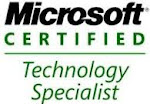When I try to edit the excel in SharePoint 2010 list in
Datasheet view, I see an error saying that “The Selected Cells are Read-only”
as shown the image below.
- I have verified user Permissions to the list. User Having Full control permissions to the list
- Checked-out by any one (It is not document library)
- Any Attachments having read-only – NO
- Is current column is default system column? (Like Created, Modified Etc..) – NO
After checking all these details, I found Microsoft
Support article about the fix. We have Content Approval enabled in the list
and that is blocking DataSheet View edit. By Turning Off the Content Approval,
We can fix the error.
Here are the steps to turn off content approvals,
- In the List select Settings
- Select List Settings
- Select Versioning Settings
- In the Content Approval section select No for "Require content approval for submitted items"
Now we can able to edit
the items in DataSheet view.
Hope this helps.



















.jpg)
.jpg)


